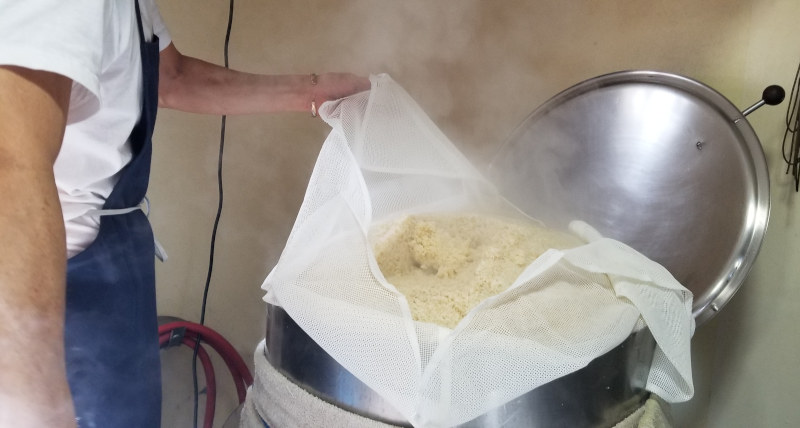
Koji
To make miso you’ll need koji. Koji is steamed polished rice or barley inoculated with the Aspergillus oryzae culture. It is responsible for the fermentation process of miso and a number of other fermented foods such as sake, rice vinegar, amazake, and soy sauce. Its function is to convert starch, protein, and fats to their simpler easier to digest compounds (sugars, amino acids, fatty acids, and glycerol), transforming the original food into new food and releasing beneficial nutrients in the process. Nature at work!
Our specific cultures can be used for amazake, rice milk, light and dark rice miso, sake, shio koji, and pickles.
The basic difference between the types of koji is the ratios of the enzymes they contain: amylase (breaks down carbohydrates), protease (breaks down protein), and lipase (breaks down fats) are the most common. For example, Amazake Koji has a higher ratio of amylase (breaking down carbohydrates), Long Term Koji has a higher ratio of protease (breaking down proteins), and Short Term Koji has a more balanced ratio of enzymes making it more of an “all-purpose” koji.
The reason we use the terms “short term” and “long term” is because in recipes that use Short Term Koji, the ratio of koji to soybeans is higher, making it ferment in a short period of time and Long Term Koji is used when the ratio of beans is lower, making it ferment over a long period of time.
The package includes directions that tell you how to use it.
Koji Varieties


Frequently Asked Questions About Koji
What is the difference between the varieties of koji?
The basic difference between the types of koji is the ratios of the enzymes they contain: amylase (breaks down carbohydrates), protease (breaks down protein), lipase (breaks down fats) are the most common.
For example, Amazake koji has a higher ratio of amylase (breaking down carbohydrates), Long Term koji has a higher ratio of protease (breaking down proteins), and Short Term koji has a more balanced enzyme ratio making it more of an “all-purpose” koji.
The reason we use the terms “short term” and “long term” is because recipes that call for short-term koji have more koji, making it ferment in a shorter amount of time. Long-term koji recipes call for more beans, making them ferment in a longer amount of time.
Can I freeze koji?
Yes! Dried koji can be kept refrigerated or frozen, or stored in a dry, cool place. It will last 2 years or longer but will lose some of its potency over time.
What about phytic acid in koji?
Phytic acid is a compound that chelates and is thus a double-edged sword: it is thought to prevent the absorption of iron, zinc, phosphorus, and calcium and magnesium by bonding to it, as well as to a lesser degree, help in the removal of heavy metals from the body. Quantities of phytic acid are found in grains, beans, nuts, and seeds, including soy and rice.
Phytic acid is broken down by phytase, a digestive enzyme released by Aspergillus oryzae (a koji mold) and Rhizopus oligosporus (tempeh’s main mold). Studies have shown that products fermented using these molds have a significantly reduced level of phytic acid. Much is still unknown about phytic acid. That is why a safe approach is to consume a traditional balanced diet consisting of a large variety of home-grown and home-made organic foods, including fermented foods.
Let’s have some common sense of faith in our ancestors and not throw away the baby with the bathwater!
Tip to neutralize phytic acid: Add some broken up koji to your grains, beans, nuts, or seeds if you decide you need to soak them overnight to enhance the break down of phytic acid, by using the phytase present in the koji.



